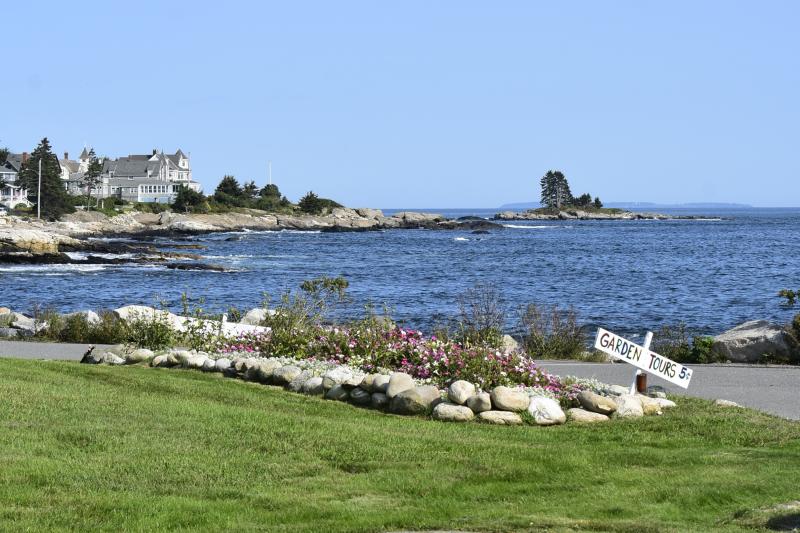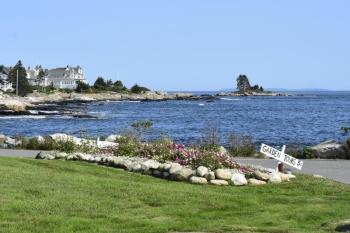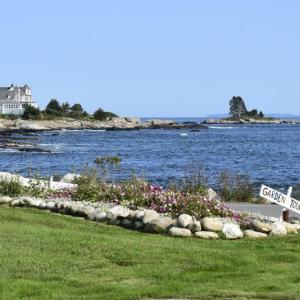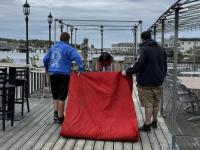Image Id 684262 for Node 256399
With national headlines about wildfires and melting glaciers, it's easy to forget the smaller effects of a warming planet. However, many gardeners need no reminder. To better understand Maine’s changing climate, just look in your planters.
UMaine Cooperative Extension recently gave a talk on gardening during climate change: “Weather Resilient Growing: What Maine Gardeners Need to Know.” The talk opened the Extension's 2025 Gardening for the Future series to help Mainers foster resilient gardens as weather and climate become more unpredictable.
“(Learn) how to manage extremes,” Maine State Climatologist Sean Birkle said. "When you plan your garden, see how the season is developing. Part of the challenge is whether we get a really dry year, or very wet year, or something in between. There's always this variability that we must contend with.”
First, it's important to distinguish weather from climate. Weather is the short-term, day-to-day atmospheric conditions for an area. Climate is a long-term outlook, often viewed in a 30-year lens. NOAA says climate is what you expect, and weather is what you get.
According to Birkel, Maine is getting warmer and wetter. He said Maine’s 10 warmest years have occurred since 1998, and annual temperatures have increased around 3.5F since 1895; In the same timeframe, annual precipitation increased around six inches.
Birkel also said Maine’s weather is becoming more extreme and variable. He said 2020 was Maine’s driest May through September period on record; Three years later, 2023 was one of the wettest. And he said the past 20 years have seen the highest occurrence of over two-inch precipitation events alongside historical temperature highs.
But how does this affect gardeners? Temperature swings could cause more frost damage from false springtimes, midwinter rains could produce more erosion, seasonal warming could attract new pests and invasive species, and longer summers could cause more heat stress, evaporation and drought.
However, change also sows seeds of opportunity. Birkel said consistent 50F days have increased by two weeks over a century; Likewise, periods below 32F have shrunk. Shorter winters mean a longer growing season, with different plants and crops becoming viable. “A lot of people have noticed that September especially seems to be warmer than it was three decades ago, and the data show that and, anecdotally, we feel that,” he said.
But Birkel added that unexpected variability can truncate a growing season. He shared data from Caribou going back to 1950, which showed an overall temperature increase but fluctuating growing seasons; The shortest was 103 days in 1963, the longest 160 days in 1998, but, in 2020, it was 107 days.
So how can gardeners prepare? According to Rebecca Long from UMaine Cooperative Extension, they need to plan for a range of conditions. “Rather than focus on adapting to one specific kind of change, we can focus on becoming just overall, more resilient, and resilience is going to be our ability to adapt to change,” Long said.
To build resilience, Long said to increase organic matter and reduce soil disturbance. When soil is aggressively disturbed, such as by a rototiller, it loses its natural structure that helps keep it healthy and resist erosion. The process, which she likened to sending soil through a blender, can also negatively impact insects, worms and microbes that are part of a soil’s ecosystem. Try manually tilling instead, which also reduces the carbon footprint from gas-powered tools.
To increase soil stability and health, increase organic matter including living plants or plant debris. Long recommended having living roots in the soil for as long as possible, planting something like buckwheat after the early vegetable season to keep the garden alive. For perennial gardens, she said to plant densely and in layers, mimicking a meadow. In addition, plants help retain soil structure and limit erosion as their roots disperse water underground.
Organic matter can also provide winter insulation for your garden, and a habitat for overwintering insects and nesting pollinators. She said cutting dead stems on herbaceous perennials into six-inch pieces and spreading them over garden beds can act as supplemental mulch. Leaves can provide similar protection, but beware of fungus. Larger yard debris like sticks and downed trees could be turned into dead hedges or left as wildlife habitat.
“These practices mimic nature where no one is coming in and removing stems and leaves and, instead, that organic matter is staying near the plant and providing shelter for the soil until it gets decomposed by soil critters,” Long said. She later added, “keeping all this carbon on your property is going to build your soil as it decomposes, but also add resources and habitat for wildlife, and saves on the fuel needed to transport it elsewhere.”
Diversity is also a bulwark against extremes. A monoculture grass lawn requires a significant amount of water and upkeep. However, non-invasive species are better adapted to local climates, even as they change. When gardening for pollinators or wildlife, Long recommended having multiple species for each niche as insurance in case one fails.
“The more diversity you have in species, and the more genetic variety, the more resilient your plants are to challenging conditions in addition to pest and disease pressure,” Long said. “As you're diversifying the plants in your garden, consider adding natives. Natives are adapted to our growing conditions. So, they're going to need less inputs plus you're also going to build the resilience of your local ecosystem by supporting native insects and wildlife.”
However, building garden resilience isn'tjust about what happens in the soil. Long recommended monitoring and tracking home conditions. Keeping a journal to record major weather events, first and last frost, and blooms can help make sense of seasonal changes. The information can help plan for your favorite varieties, or to consider if a new species is better suited to your changing backyard.
“Once you've started collecting this data and recording it, you're going to be able to use it to make decisions that take into account your specific site and microclimate,” she said.


























